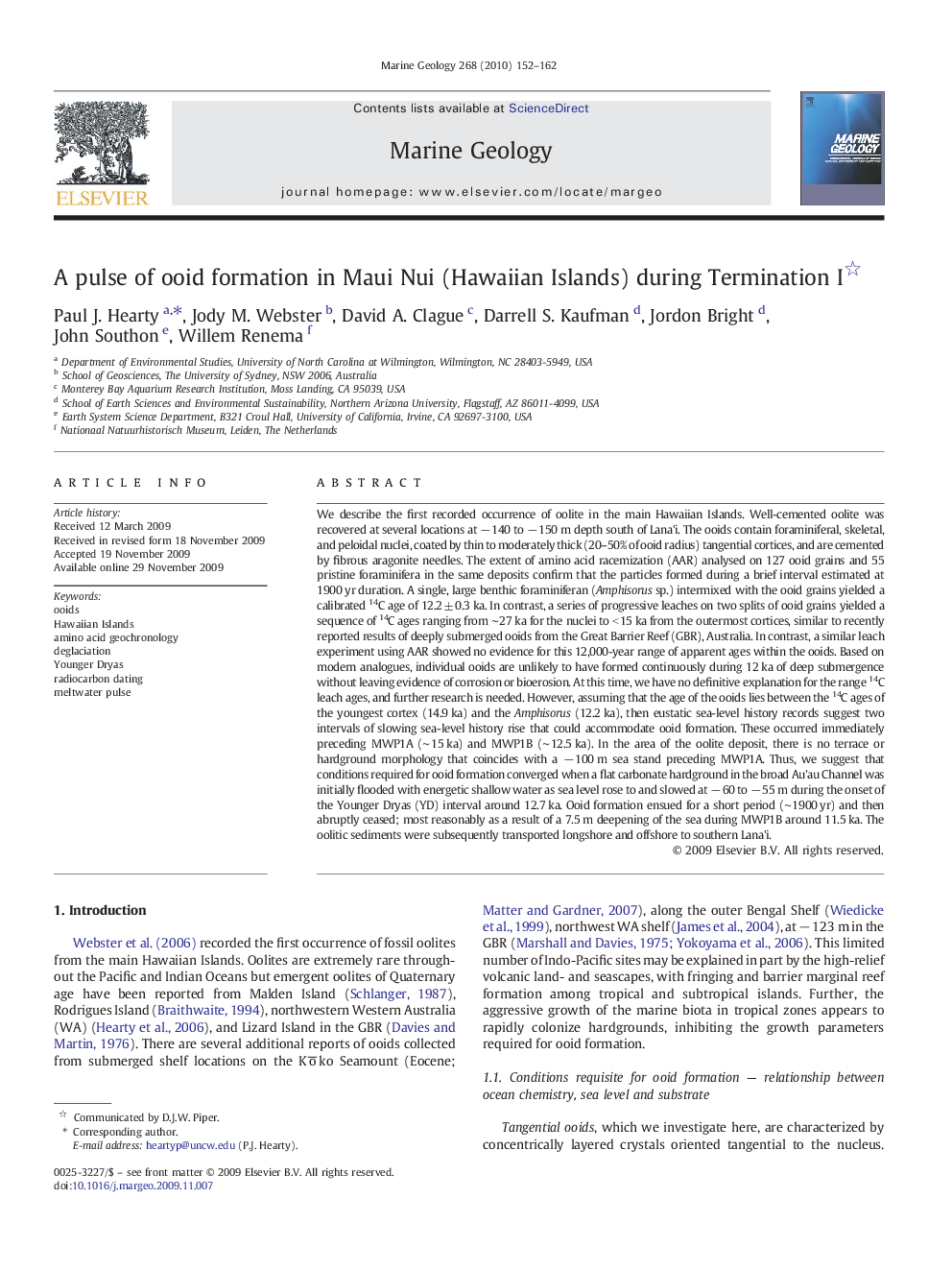| کد مقاله | کد نشریه | سال انتشار | مقاله انگلیسی | نسخه تمام متن |
|---|---|---|---|---|
| 4718995 | 1639155 | 2010 | 11 صفحه PDF | دانلود رایگان |

We describe the first recorded occurrence of oolite in the main Hawaiian Islands. Well-cemented oolite was recovered at several locations at − 140 to − 150 m depth south of Lana'i. The ooids contain foraminiferal, skeletal, and peloidal nuclei, coated by thin to moderately thick (20–50% of ooid radius) tangential cortices, and are cemented by fibrous aragonite needles. The extent of amino acid racemization (AAR) analysed on 127 ooid grains and 55 pristine foraminifera in the same deposits confirm that the particles formed during a brief interval estimated at 1900 yr duration. A single, large benthic foraminiferan (Amphisorus sp.) intermixed with the ooid grains yielded a calibrated 14C age of 12.2 ± 0.3 ka. In contrast, a series of progressive leaches on two splits of ooid grains yielded a sequence of 14C ages ranging from ∼ 27 ka for the nuclei to < 15 ka from the outermost cortices, similar to recently reported results of deeply submerged ooids from the Great Barrier Reef (GBR), Australia. In contrast, a similar leach experiment using AAR showed no evidence for this 12,000-year range of apparent ages within the ooids. Based on modern analogues, individual ooids are unlikely to have formed continuously during 12 ka of deep submergence without leaving evidence of corrosion or bioerosion. At this time, we have no definitive explanation for the range 14C leach ages, and further research is needed. However, assuming that the age of the ooids lies between the 14C ages of the youngest cortex (14.9 ka) and the Amphisorus (12.2 ka), then eustatic sea-level history records suggest two intervals of slowing sea-level history rise that could accommodate ooid formation. These occurred immediately preceding MWP1A (∼ 15 ka) and MWP1B (∼ 12.5 ka). In the area of the oolite deposit, there is no terrace or hardground morphology that coincides with a − 100 m sea stand preceding MWP1A. Thus, we suggest that conditions required for ooid formation converged when a flat carbonate hardground in the broad Au'au Channel was initially flooded with energetic shallow water as sea level rose to and slowed at − 60 to − 55 m during the onset of the Younger Dryas (YD) interval around 12.7 ka. Ooid formation ensued for a short period (∼ 1900 yr) and then abruptly ceased; most reasonably as a result of a 7.5 m deepening of the sea during MWP1B around 11.5 ka. The oolitic sediments were subsequently transported longshore and offshore to southern Lana'i.
Journal: Marine Geology - Volume 268, Issues 1–4, 15 January 2010, Pages 152–162